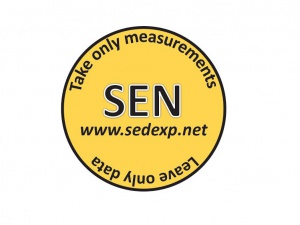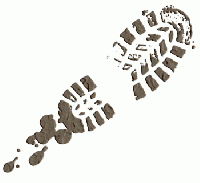Form:CSDMS annual meeting: Difference between revisions
No edit summary |
No edit summary |
||
| Line 140: | Line 140: | ||
| abstract = Dakota (https://dakota.sandia.gov) is an open-source software toolkit, designed and developed at Sandia National Laboratories, that provides a library of iterative systems analysis methods, including sensitivity analysis, uncertainty quantification, optimization, and parameter estimation. Dakota can be used to answer questions such as:<br><br>·What are the important parameters in my model?<br>·How safe, robust, and reliable is my model?<br>·What parameter values best match my observational data?<br><br>Dakota has been installed on the CSDMS supercomputer, beach, and is available to all registered users. The full set of Dakota methods can be invoked from the command line on beach; however, this requires detailed knowledge of Dakota, including how to set up a Dakota input file, and how to pass parameters and responses between a model and Dakota. To make Dakota more accessible to the CSDMS community, a subset of its functionality has been configured to run through the CSDMS Web Modeling Tool (WMT; https://csdms.colorado.edu/wmt). WMT provides access to the following Dakota methods:<br><br>·vector, centered, list and multidimensional parameter studies<br>·design and analysis of computer experiments with Monte Carlo and Latin Hypercube sampling methods<br>·uncertainty quantification with sampling, polynomial chaos expansion and stocastic collocation techniques<br><br>In this clinic, we'll provide an overview of Dakota, then, through WMT, set up and perform a series of numerical experiments with Dakota on beach, and evaluate the results.<br> | | abstract = Dakota (https://dakota.sandia.gov) is an open-source software toolkit, designed and developed at Sandia National Laboratories, that provides a library of iterative systems analysis methods, including sensitivity analysis, uncertainty quantification, optimization, and parameter estimation. Dakota can be used to answer questions such as:<br><br>·What are the important parameters in my model?<br>·How safe, robust, and reliable is my model?<br>·What parameter values best match my observational data?<br><br>Dakota has been installed on the CSDMS supercomputer, beach, and is available to all registered users. The full set of Dakota methods can be invoked from the command line on beach; however, this requires detailed knowledge of Dakota, including how to set up a Dakota input file, and how to pass parameters and responses between a model and Dakota. To make Dakota more accessible to the CSDMS community, a subset of its functionality has been configured to run through the CSDMS Web Modeling Tool (WMT; https://csdms.colorado.edu/wmt). WMT provides access to the following Dakota methods:<br><br>·vector, centered, list and multidimensional parameter studies<br>·design and analysis of computer experiments with Monte Carlo and Latin Hypercube sampling methods<br>·uncertainty quantification with sampling, polynomial chaos expansion and stocastic collocation techniques<br><br>In this clinic, we'll provide an overview of Dakota, then, through WMT, set up and perform a series of numerical experiments with Dakota on beach, and evaluate the results.<br> | ||
}} | }} | ||
===Wednesday (2<sup>nd</sup> day)=== | ===Wednesday (2<sup>nd</sup> day)=== | ||
{{Keynote-clinics | {{Keynote-clinics | ||
| name = Eric Hutton & Mark Piper | | name = Eric Hutton & Mark Piper | ||
| Line 176: | Line 150: | ||
| abstract = In order to simplify conversion of an existing model to a reusable, plug-and-play model component, CSDMS has developed a simple interface called the Basic Model Interface (BMI) that model developers are asked to implement. In this context, an interface is a named set of functions with prescribed function names, argument types and return types. By design, the BMI functions are straightforward to implement in C, C++, Fortran, Java and Python. Also by design, the BMI functions are noninvasive. A BMI-compliant model does not make any calls to CSDMS components or tools and is not modified to use CSDMS data structures. BMI therefore introduces no dependencies into a model and the model can still be used in a stand-alone manner.<br><br>Models that provide a BMI can be incorporated into a modeling framework, such as the CSDMS model coupling framework, where they gain new capabilities provided by the framework. The CSDMS framework allows coupling of models even if they differ in:<br><br>• programming language,<br>• variable names,<br>• variable units,<br>• time-stepping scheme or<br>• computational grid is different.<br><br>Framework models also gain the ability to write output variables to NetCDF files, a graphical user interface, and the ability to run within the CSDMS Web Tool.<br><br>This clinic will explain the key concepts of BMI (and CSDMS Standard Names), and will demonstrate, through example, how to implement a BMI for an existing model. It will also include an overview of the CSDMS Standard Names, which provide a uniform way to map input and output variable names between component models as part of a BMI implementation. Participants are encouraged to read the associated CSDMS wiki pages in advance. See<br><br>• [[BMI_Description|BMI Description]]<br>• [[CSDMS_Standard_Names|CSDMS Standard Names]] | | abstract = In order to simplify conversion of an existing model to a reusable, plug-and-play model component, CSDMS has developed a simple interface called the Basic Model Interface (BMI) that model developers are asked to implement. In this context, an interface is a named set of functions with prescribed function names, argument types and return types. By design, the BMI functions are straightforward to implement in C, C++, Fortran, Java and Python. Also by design, the BMI functions are noninvasive. A BMI-compliant model does not make any calls to CSDMS components or tools and is not modified to use CSDMS data structures. BMI therefore introduces no dependencies into a model and the model can still be used in a stand-alone manner.<br><br>Models that provide a BMI can be incorporated into a modeling framework, such as the CSDMS model coupling framework, where they gain new capabilities provided by the framework. The CSDMS framework allows coupling of models even if they differ in:<br><br>• programming language,<br>• variable names,<br>• variable units,<br>• time-stepping scheme or<br>• computational grid is different.<br><br>Framework models also gain the ability to write output variables to NetCDF files, a graphical user interface, and the ability to run within the CSDMS Web Tool.<br><br>This clinic will explain the key concepts of BMI (and CSDMS Standard Names), and will demonstrate, through example, how to implement a BMI for an existing model. It will also include an overview of the CSDMS Standard Names, which provide a uniform way to map input and output variable names between component models as part of a BMI implementation. Participants are encouraged to read the associated CSDMS wiki pages in advance. See<br><br>• [[BMI_Description|BMI Description]]<br>• [[CSDMS_Standard_Names|CSDMS Standard Names]] | ||
}} | }} | ||
===Thursday (3<sup>rd</sup> day)=== | ===Thursday (3<sup>rd</sup> day)=== | ||
{{Keynote-clinics | {{Keynote-clinics | ||
| Line 198: | Line 166: | ||
| abstract = Gregory E. Tucker <sup>1</sup>, Daniel E.J. Hobley <sup>1</sup>, Jordan M. Adams <sup>2</sup>, Sai S. Nudurupati <sup>3</sup>, Eric Hutton <sup>4</sup>, Nicole M. Gasparini <sup>2</sup>, and Erkan Istanbulluoglu <sup>3</sup><br><br><small><sup>1</sup> CIRES and Department of Geological Sciences, University of Colorado at Boulder<br><sup>2</sup> Department of Earth and Environmental Sciences, Tulane University<br><sup>3</sup> Department of Civil and Environmental Engineering, University of Washington<br><sup>4</sup> CSDMS, University of Colorado at Boulder</small><br><br>Writing the software to implement a two-dimensional numerical model can be a daunting exercise, even when the underlying discretization and numerical schemes are relatively simple. The challenge is even greater when the desired model includes ``advanced'' features such as an unstructured grid, a staggered-grid numerical solver, or input/output operations on gridded data. Landlab is a Python-language programming library that makes the process of 2D model-building simpler and more efficient. Landlab's core features include: (1) a gridding engine that lets you create and configure a structured or unstructured grid in just a few lines of code, and to attach data directly to the grid; (2) a library of pre-built process components that saves you from having to re-invent the wheel with common geoscience algorithms (such as flow routing on gridded terrain, linear and nonlinear diffusion, and elastic plate flexure); (3) a mechanism for coupling components together to create integrated model; and (4) a suite of tools for input/output and other common operations. Although Landlab's components are primarily related to earth-surface dynamics (including geomorphology and hydrology), its basic framework is applicable to many types of geophysical system. This clinic provides a hands-on tutorial introduction to Landlab. Participants will learn about Landlab's capabilities, and how to use it to build and run simple 2D models. Familiarity with the Python language and the Numpy library is helpful but not critical. | | abstract = Gregory E. Tucker <sup>1</sup>, Daniel E.J. Hobley <sup>1</sup>, Jordan M. Adams <sup>2</sup>, Sai S. Nudurupati <sup>3</sup>, Eric Hutton <sup>4</sup>, Nicole M. Gasparini <sup>2</sup>, and Erkan Istanbulluoglu <sup>3</sup><br><br><small><sup>1</sup> CIRES and Department of Geological Sciences, University of Colorado at Boulder<br><sup>2</sup> Department of Earth and Environmental Sciences, Tulane University<br><sup>3</sup> Department of Civil and Environmental Engineering, University of Washington<br><sup>4</sup> CSDMS, University of Colorado at Boulder</small><br><br>Writing the software to implement a two-dimensional numerical model can be a daunting exercise, even when the underlying discretization and numerical schemes are relatively simple. The challenge is even greater when the desired model includes ``advanced'' features such as an unstructured grid, a staggered-grid numerical solver, or input/output operations on gridded data. Landlab is a Python-language programming library that makes the process of 2D model-building simpler and more efficient. Landlab's core features include: (1) a gridding engine that lets you create and configure a structured or unstructured grid in just a few lines of code, and to attach data directly to the grid; (2) a library of pre-built process components that saves you from having to re-invent the wheel with common geoscience algorithms (such as flow routing on gridded terrain, linear and nonlinear diffusion, and elastic plate flexure); (3) a mechanism for coupling components together to create integrated model; and (4) a suite of tools for input/output and other common operations. Although Landlab's components are primarily related to earth-surface dynamics (including geomorphology and hydrology), its basic framework is applicable to many types of geophysical system. This clinic provides a hands-on tutorial introduction to Landlab. Participants will learn about Landlab's capabilities, and how to use it to build and run simple 2D models. Familiarity with the Python language and the Numpy library is helpful but not critical. | ||
}} | }} | ||
<br> | <br> | ||
--> | --> | ||
Revision as of 16:32, 13 January 2016
Capturing Climate Change
May 17 -19th 2016, Boulder Colorado, USA
Optional: May 16th 2016, pre-conference bootcamp
Registration
Registration will open Mid January
Objectives and general description
The joint CSDMS - SEN* 2016 annual meeting will focus on “advances in simulating the imprint of climate change on the land and seascapes, including the processes that influence them”. We would like presentations to either focus on the impacts of present and future climate change, or how climate change has impacted the earth in the past. Topics of interests also include modeling research that integrate different disciplines, different scales, and the synergy between models and experimental data. As in past meetings, keynote speakers are by invitation only, and poster presentations are the general media. The meeting will include:
- State-of-the art keynote presentations in earth-surface dynamics and modeling
- Hands-on clinics related to community models, tools and approaches
- Transformative software products and approaches designed to be accessible, easy to use, and relevant
- Breakout sessions for Working, Focus Research Groups and the Initiatives
- Poster Sessions
and more!
Poster Information: The poster boards are configured for 4' wide by 6' tall (portrait orientation) posters. The deadline to submit abstracts is April 15, 2016.
Agenda
Click here to view the draft agenda of 12/29/2015.
Participants
Interested to see who registered for the meeting as of 11/21/2025?
- Participants meeting
- Submitted abstracts
- Participants bootcamp
Reimbursement

Within its budget, CSDMS intends to support member applicants to attend the annual meeting. Towards this goal, we encourage members to fully or partially cover their expenses if capable. We additionally thank those in the industry and agency fields for understanding that 1) we cannot compensate federal agency participants since our own funding is from NSF, and 2) we request that our industrial/ corporate participants cover their own costs thereby allowing more academic participants to attend.
To the extent possible, CSDMS intends to reimburse the registration fee, lodging (shared rooms at 100% and single rooms at 50% at conference hotels), and a limited amount of travel expenses for qualified registrants - those members who will attend all three days of the meeting and are not industry or federal employees.
Important for foreign travelers requesting reimbursement: If you need a visa to travel to USA, select a business visa. If you need an invitation letter, please email csdms@colorado.edu as soon as possible. Also indicate whether specific wording is required in the letter. Second, we will need to copy the entry stamp in your passport sometime during the meeting as proof that you were here on business as required by US tax laws for reimbursement (especially when dealing with airfare.) We are only able to provide reimbursement for airfare within the U.S. All airfare that is being reimbursed must be for airlines that are U.S. flag carriers.
Travel, Lodging and Conference Center Information
The meeting will be held at SEEC
Hotels: Millennium Harvest House Hotel and the Boulder Inn by Best Western
Transportation:
You can book transportation between DIA and Boulder here: Green Ride Boulder. And information on how to find Green Ride Boulder at DIA.
We will provide a bus between the hotels and the meeting venue each day. We will also provide transportation to the banquet.
Pre-conference one-day Software Carpentry bootcamp
CSDMS will host a Pre-conference one-day Software Carpentry bootcamp on Monday May 16th, 2016. The objective is to teach basic programming skills that will be useful for scientific computing and model development. This is an intensive, hands-on workshop, during which certified instructors will cover basic elements of:
- the Unix bash shell,
- Python programming and NumPy, and
- Github for version control.
Our instructors are earth scientists and have familiarity with the CSDMS framework, such that lessons and examples will be targeted toward relevant problems in your field. The bootcamp intentionally precedes the CSDMS meeting, so the skills participants develop should be useful in the clinics during the meeting.
Note:
- Registration is open till April 1st (or until program fill) and is handled through the 2016 meeting site.
- The bootcamp is capped at 30 participants (first paid first serve), and it has a $25 registration fee.
- Participant will be responsible for cost / organization of their extra day of hotel accommodation and dinner. Costs will not be reimbursed.
- We will cover coffee and lunch during the bootcamp.
Student Scholarships
This year CSDMS is offering a limited number of scholarships (up to 12) for graduate students to attend the CSDMS annual meeting. Three scholarships will be offered for the purpose of increasing participation of underrepresented students. To be eligible, graduate students need to meet the following requirements:
- Attend the whole meeting (May 17-19, 2016)
- Submit an abstract
- Be enrolled as a graduate student at the time of the meeting (bring proof)
- Submit a letter of motivation that states why you wish to participate in the meeting, and explain how your participation would enhance diversity in the field of surface dynamics modeling.
The CSDMS scholarships will cover:
- Registration costs
- Travel (air fare ONLY within the United States and local transport)
- Per diem to help reimburse the cost of meals from 17-19 May 2016 not offered in the conference schedule
Important dates
- January 15th: Registration opens
- March 1st: Deadline for student scholarship applications
- April 1st: Deadline for abstract submission & registration
- May 16th: Optional: pre-conference bootcamp
- May 17-19th: CSDMS annual meeting
- May 20th: CSDMS Executive and Steering committees meeting (by invitation only)


* The Sediment Experimentalist Network (SEN) integrates the efforts of sediment experimentalists to build a knowledge base for guidance on best practices for data collection and management. The network facilitates cross-institutional collaborative experiments and communicates with the research community about data and metadata guidelines for sediment-based experiments. This effort aims to improve the efficiency and transparency of sedimentary research for field geologists and modelers as well as experimentalists.

